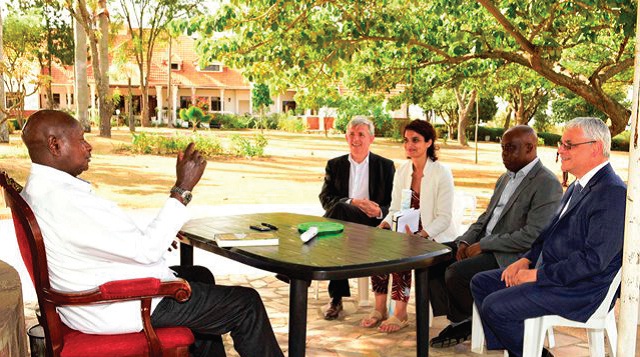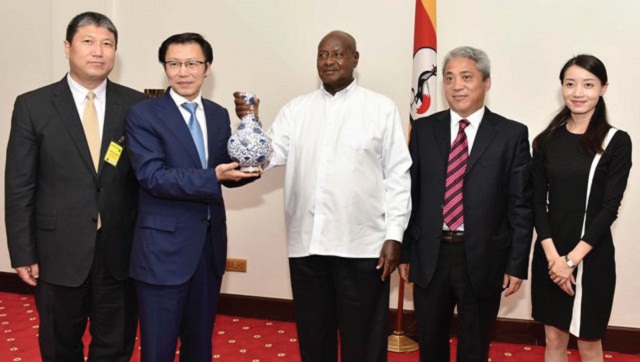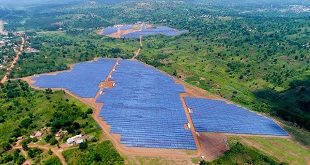
Meanwhile, with the pipeline going through Tanzania, cash-strapped Tullow was left in a latch. Without much interest left in Uganda, Tullow decided to reduce its footprint in the country even further; the reason it is farming out. But Tullow’s move now appears to have emboldened the Chinese to take on Total.
As part of this fight, CNOOC is now demanding operatorship of Exploration Area 2 (EA2), the same area Tullow had already agreed to sell to Total. In March, CNOOC notified Tullow that it was exercising its right to acquire 50% of the interest Tullow is transferring to Total. The case has gone to President Museveni.
Abdul M Kibuuka, the Public Affairs and National Content Manager of Tullow Uganda, confirmed to The Independent that the companies had concluded negotiations and entered an agreement.
“We are now waiting for government approval,” Kibuuka said.
By press time, both CNOOC and Total had not responded to our queries.
Energy Ministry Permanent Secretary, Robert Kasande, also confirmed that the companies had submitted the transaction paperwork for approval.
“We are in the process of reviewing the transaction,” Kasande said.
But since the negotiations of these agreements lasted months from March until October, insiders say that government asked the companies to focus on the 2020 deadline as they iron out their other differences.
Enerst Rubondo, the Executive Director, Petroleum Authority of Uganda (PAU), told The Independent that as he sees it, the disagreements amongst the companies would not affect the production timelines.
“The companies will resolve the issues,” he said sounding upbeat about 2018, which he said promised to be a super active year in the oil industry.
A quick decision on the government’s side will also depend on whether the deal will not attract tax disputes as the ones before it.
There is hope that since the farm-down is seen as a critical stage before the Final Investment Decision (FID), which is expected to unlock billions and kick-start production, President Museveni will act swiftly.
Uganda discovered commercial oil reserves –6.5 billion barrels–over 10 years ago but has not been able to produce oil.
Fights between government and the oil companies over taxes and the requisite infrastructure and amongst oil companies themselves for dominance are part of the problem.
Embedded in the current fight are concerns by CNOOC that most of the deals are going to Total. Apparently, CNOOC’s concerns are due to the fact that Total is already selecting companies that will carry out the next big thing in Uganda’s oil sector; the Engineering, Procurement and Construction (EPC) for the two main projects.
It is the EPC contracts that will swallow the biggest chunk of $ 10 billion for the development phase.
The Chinese have reportedly told Total that if it takes the lead on the pipeline, CNOOC should take the lead on the upstream—oil fields.
After taking the pipeline and eyeing a stake in the refinery, Total has a firm grip on the mid-stream. If it snatches Tullow’s stake in the farm down, it will dominate the oil fields also and leave CNOOC with crumbs. Already, Total commands the biggest market share in Uganda’s petroleum distribution segment.
Total has already been flexing its muscle. It has reportedly already code-named its Tullow EA2 deal under the Tilenga project and is excited about it because it stands to give them the leading role in the entire project.

In February, it picked three companies to carry out FEED studies for this Tilenga project. These included; Technip (French), Fluor (U.S. and partnering with China Petroleum Engineering and Construction Corporation-CPECC) and the Chicago Bridge & Iron Company (CB&I).
Insiders say CNOOC had also picked a Chinese company for the FEED studies of the Kingfisher project. FEED studies define cost and construction designs for facilities required for oil production.
CNOOC is fighting to ensure that with the farm down, it is not left operating only the kingfisher field as a minority player in Uganda’s oil sector.
Under the current arrangement, CNOOC operates Kingfisher, Tullow EA2 and Total EA1 and EA1A.
But with the $3.55 billion pipeline deal in the bag too, Total is in a dominant position.
Total chairman and chief executive, Patrick Pouyanné, made this point when he said “following the agreement on the Tanzanian export pipeline route, this transaction gives Total a leadership position to move this project efficiently toward FID in the current attractive cost environment.”
But Total must also tread carefully – because it needs the oil held by CNOOC for production to be viable in the short-run.
At stake are deals about $ 20 billion. Apart from the $3.55 billion pipeline, there is the $ 4.5 billion oil refinery, and the over $ 10 billion expected to be invested in the infrastructure required to get the fields ready to start producing oil.
It is no surprise for some, therefore, that CNOOC also announced it wanted a share of the Tullow farm down. That meant the deal had to be renegotiated.
The fighting phase of the type going on appeared to have been overcome in August last year when government awarded the oil companies eight oil production licences. The licences came after almost two years of intractable negotiations over the oil companies oil production plans.
At the time, President Museveni desire to have oil pumped by 2020 appeared achievable. That timing is very critical for Museveni; it is the campaign year for the 2021 elections, in which he has showed he is keen to seek reelection. Getting oil cash would be a major boost and the fights amongst the oil companies are making this prospect harder.
The deadline already looks unrealistic because the oil companies need at least three years after making the FID to start pumping oil. The FID is now expected between June and December next year. This would mean that at the very least, Uganda can only be able to pump oil after well after 2021.
 The Independent Uganda: You get the Truth we Pay the Price
The Independent Uganda: You get the Truth we Pay the Price


